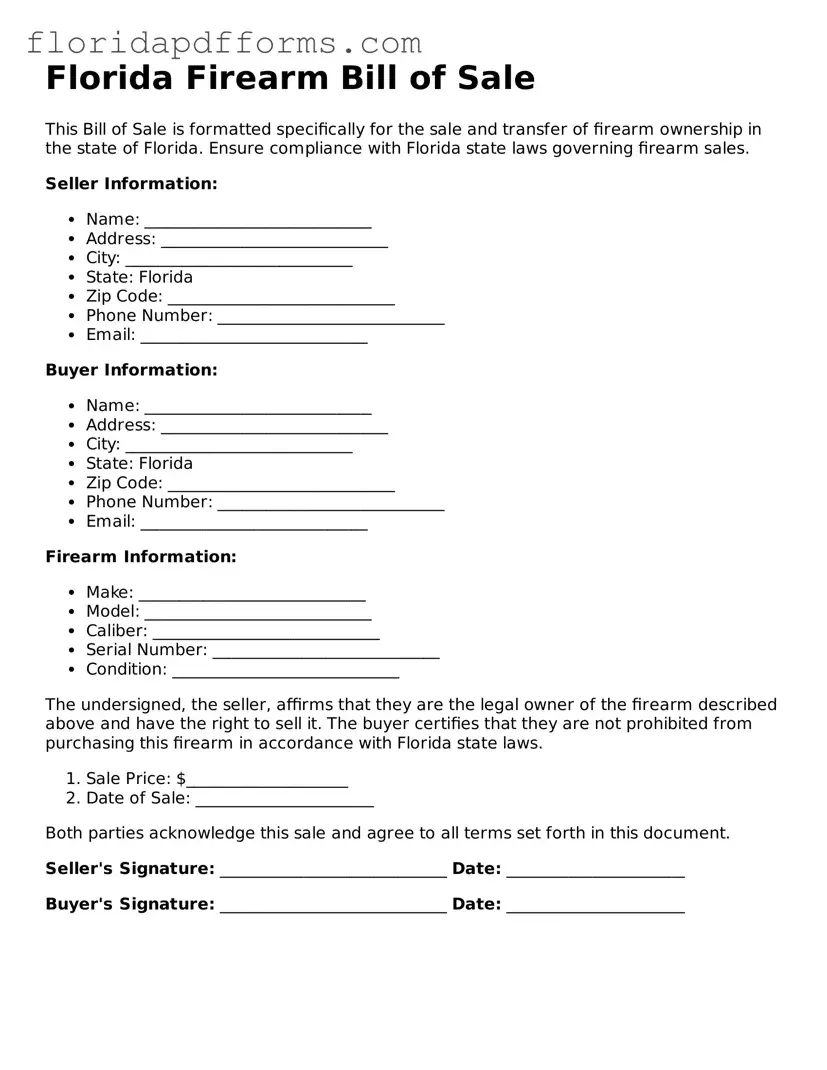The Florida Firearm Bill of Sale form shares similarities with a standard vehicle Bill of Sale. Both documents serve as proof of transfer of ownership from one party to another. In the case of a vehicle, the seller provides details about the car, including the make, model, year, and Vehicle Identification Number (VIN). Similarly, the firearm Bill of Sale includes information about the firearm, such as the make, model, and serial number. Both forms also require the signatures of both the buyer and the seller, confirming that the transaction has taken place and that both parties agree to the terms outlined in the document.
Another document akin to the Florida Firearm Bill of Sale is the real estate purchase agreement. This agreement outlines the terms of a property sale, including the purchase price, property description, and closing date. Just like the firearm Bill of Sale, it serves as a formal record of the transaction. Both documents protect the interests of the parties involved by providing clarity on the terms and conditions of the sale. Additionally, they often require the signatures of both parties to validate the agreement, ensuring that both the buyer and seller acknowledge their responsibilities.
The personal property Bill of Sale is yet another document that bears similarities to the firearm Bill of Sale. This form is used for the sale of various personal items, such as furniture, electronics, or collectibles. Much like the firearm Bill of Sale, it details the item being sold, including its condition and any relevant identifiers. Both documents aim to provide a clear record of the transaction, safeguarding the interests of both the buyer and seller. They typically require signatures to confirm the agreement, ensuring that both parties are aware of the sale and its terms.
Lastly, the equipment Bill of Sale is comparable to the Florida Firearm Bill of Sale. This document is often used in business transactions involving machinery or equipment. It includes details about the equipment being sold, such as its specifications and condition, similar to how the firearm Bill of Sale details the firearm's make and model. Both forms serve as legal evidence of the transaction, protecting both parties by outlining the terms of the sale. Signatures from both the buyer and seller are also required in this case, reinforcing the legitimacy of the transaction.
